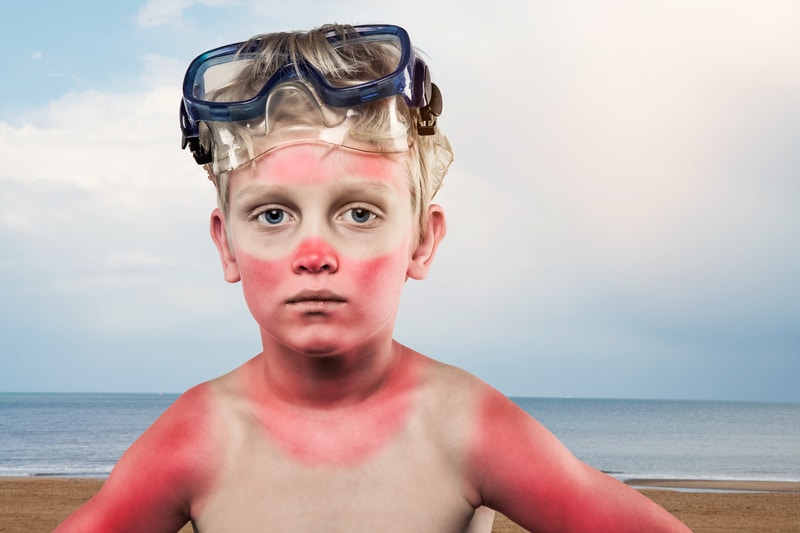Skin cancer is the most common type of cancer in the U.S. Roughly 4.3 million adults in the U.S. undergo treatment for basal cell and squamous cell carcinomas skin cancer every year. During May, Skin Cancer Awareness Month is in full swing, making it the perfect time to get the facts about skin cancer and sunscreen.
What Is Skin Cancer?
Skin cancer occurs when skin cells grow at an abnormally fast rate. There are several types of skin cancer. The most common forms are:
• Basal cell carcinoma: begins in the lowest part of the top layer of skin known as the epidermis. Roughly 80% of all skin cancer is this type. It grows slowly and is unlikely to spread.
• Squamous cell carcinoma: begins in the upper part of the epidermis.
• Melanoma: occurs in the cells that produce melanin and give skin its pigment. This rarer form of skin cancer can multiply and spread to other body areas if not treated.
What Causes Skin Cancer?
The most common cause of skin cancer is exposure to ultraviolet (UV) energy found in sunlight. UV destroys and damages the DNA present in skin cells, which can prompt them to grow uncontrollably, giving rise to cancer.
UV exposure isn’t the only factor determining whether someone gets skin cancer. Researchers are still working to determine the other causes of skin cancer. Many believe that exposure to toxins and conditions that impact the immune system may be responsible for skin cancer in some cases.
Skin Cancer Symptoms
Different types of skin cancer cause various symptoms:
• Basal cell carcinoma: often resembles a pearly or waxy bump or a flat flesh-colored or brownish lesion that looks like a scar. It may also show up as a bleeding or scabbing sore that goes away but returns.
• Squamous cell carcinoma: often resembles a firm red nodule or a flat lesion with a crusty surface.
• Melanoma: can look like a large brown spot with speckles inside, a lesion that is any color and has an irregular border, or a lesion that itches or burns. Moles that change color, grows larger, or bleed could also be melanoma.
How To Prevent Skin Cancer
Following skin cancer prevention tips can reduce your risk of developing the disease. However, it is possible to get skin cancer even with prevention strategies. Some ways to prevent skin cancer include:
1. Avoid sun exposure between 10 AM and 4 PM when UV is most intense.
2. Use a broad-spectrum sunscreen with an SPF of 15 or higher every day.
3. Apply a water-resistant, broad-spectrum sunscreen with an SPF of 30 or higher when you are outside for long periods.
4. Put sunscreen on 30 minutes before sun exposure.
5. Always use at least 1 ounce of sunscreen and apply even to areas that won’t be exposed to the sun.
6. Reapply sunscreen once every two hours or more frequently if you’re swimming or sweating.
7. Look at your skin from head to toe at least once every month, looking for new spots or changes in moles.
8. Visit a dermatologist once every year for a skin cancer screening. Some dermatologists provide free skin cancer screenings during skin cancer awareness month.
9. Don’t use tanning beds. Apply artificial tanners to get a golden glow instead of lying in the sun.
10. Wear a hat with a wide brim to protect your scalp and face from the sun.
Sunscreen Recall – Finding Safe Sunscreen
Sunscreen is crucial for skin cancer prevention, but not all sunscreens are the same. In 2021, major brands issued a recall after finding trace amounts of a carcinogen called benzene in some of their products. This has dramatically raised awareness about the importance of using caution when selecting sunscreens.
There are two main types of sunscreen:
• Physical sunscreen: works by reflecting ultraviolet energy before it comes in contact with your skin. Zinc oxide and titanium dioxide are the two physical sunscreens approved by the U.S. Food and Drug Administration for use as active ingredients in sunscreens. These ingredients are usually derived from minerals. You will sometimes see physical sunscreens referred to as sunblock or mineral sunscreen.
• Chemical sunscreen: works by absorbing ultraviolet energy. Avobenzone, escamsule, octocrylene, and oxybenzone are common active ingredients in chemical sunscreens.
The FDA has approved chemical sunscreens as generally effective and safe. However, since introducing these ingredients, medical studies suggest they may not be as safe as first thought. Evidence indicates that the skin may absorb these chemicals, introducing potentially harmful carcinogens into the bloodstream.
Due to these findings, many people see physical sunscreen as a safer option. Keep in mind that both types of sunscreens effectively protect against UV exposure. Still, if you want to avoid chemicals, a sunscreen that contains zinc oxide, titanium dioxide, or a combination of the two is likely the better option.

